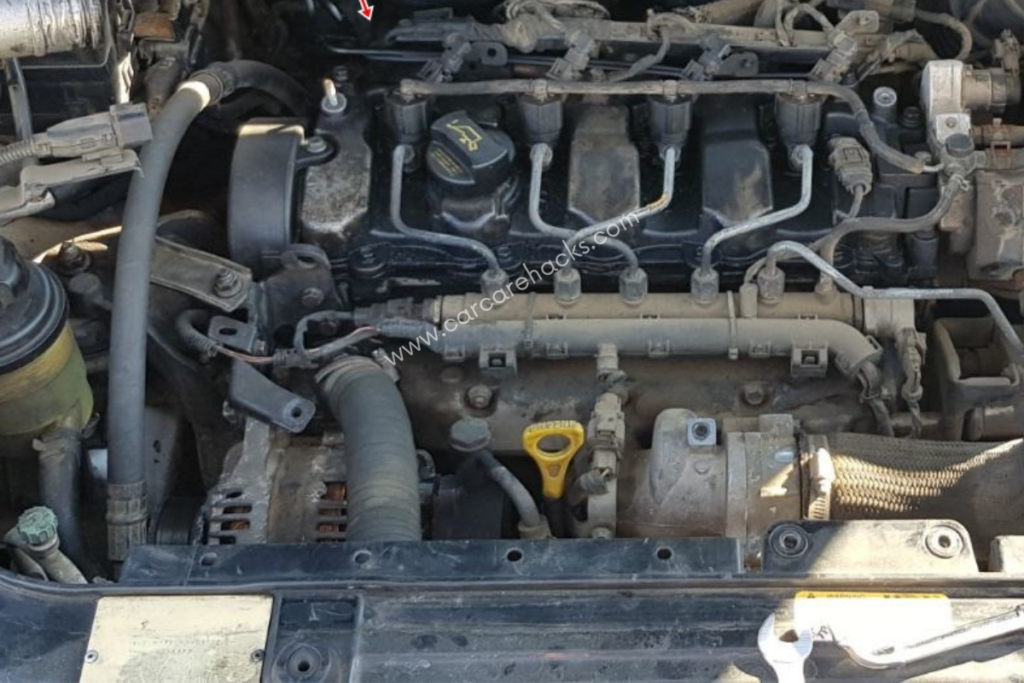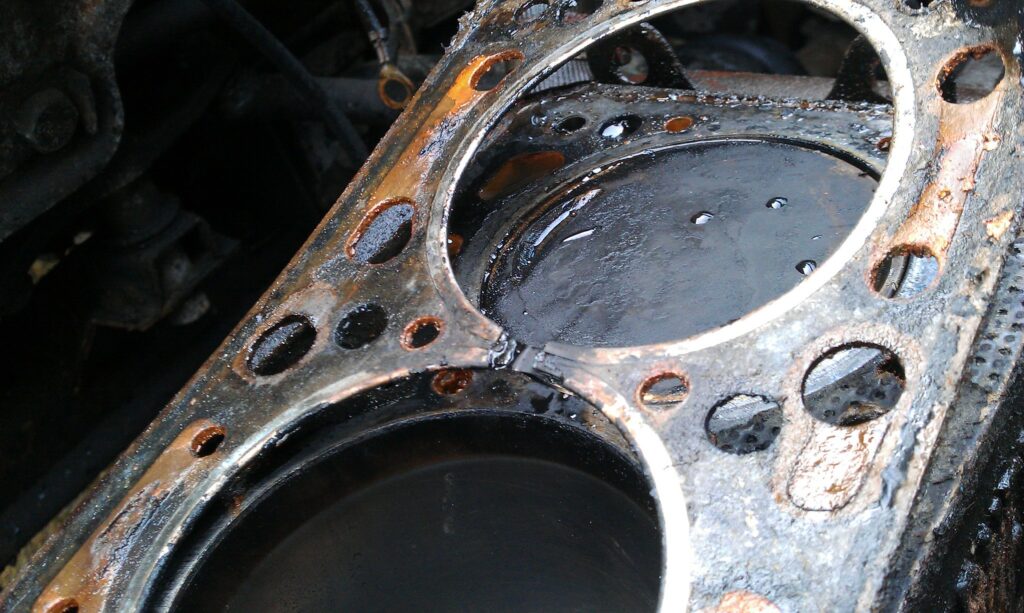Engine misfire is an unpleasant thing. When an engine is misfiring, the vehicle is shaking more than usual and it is noisier. Overall, driving with an engine misfire is not a satisfying thing. However, the misfiring happens when the fuel and air mixture isn’t ignited properly which results in an incomplete combustion cycle. Low oil pressure has nothing to do with the combustion chamber. However, low oil pressure can also cause engine shaking, increased noise, and reduced power, and this is why many people confuse low oil pressure with an engine misfire.
In this article, I will be talking about why exactly low oil pressure can’t cause a misfire.
Key Takeaway
- Low oil pressure can not cause the engine to misfire. A misfire occurs when cylinders are not producing enough power due to an incomplete combustion process and oil pressure has nothing to do with that.
- If the oil pressure is low, you will hear knocking sounds coming from the engine that suggests lubrication is lacking.
- Sludge buildup can cause low oil pressure by restricting the flow of the oil around the engine.
- Driving a vehicle with low oil pressure can over time cause a rough idle due to the increased friction between moving parts.
- Low oil pressure can result in excessive wear on engine components, resulting in increased engine noise and engine temperature.
Can Low Oil Pressure Cause Misfire

Low oil pressure can cause a check engine light, a noisier engine, vibrations from the engine, reduced engine power, and increased fuel consumption, but not misfire. Misfire occurs when one or more cylinders do not produce power due to an incomplete combustion process. Oil and low oil pressure have nothing to do with the combustion process and misfire.
However, many of the symptoms of low oil pressure overlap with those from an engine misfire. This is why many car owners confuse a low oil pressure problem with an engine misfire. In fact, I went ahead and created a table with common symptoms for both low oil pressure and misfire:
| Symptoms Caused By Misfire | Symptoms Caused By Low Oil Pressure |
|---|---|
| Check engine light | Check engine light (if no oil light option is available) |
| Engine running louder than normal | Engine running louder than normal |
| Vibrations from the engine | Vibrations from the engine |
| Reduced engine power | Reduced engine power |
| Increased fuel consumption | Increased fuel consumption |
As you can see, low oil pressure and engine misfires share at least five same symptoms. The best way to distinguish low oil pressure is to scan your vehicle with an OBD scanner. But before you do that, I would suggest you check the oil level. The most common reason why the oil pressure is low is that the engine oil level is low.
Low oil pressure in a car is an issue that should not be ignored, but it can not cause a misfire. This can cause significant and expensive damage to the vehicle. As soon as any of these symptoms appear, it’s critical that drivers take their car to a professional mechanic. Getting the car checked out will avoid further damage down the road.
What Happens If The Oil Pressure Is Too Low?

If the oil pressure drops below its normal level, it can be an indicator that an engine is running low on oil or has a blockage in its system. In some cases, it may even point to a bigger problem like a worn internal component or a bearing failure.
What happens when the oil pressure is too low is a loud knocking noise that can be heard when the engine is running, as this indicates that there are problems with the oil delivery and lubrication system.
Another thing that can happen when the oil pressure is too low is difficulty starting your car. The lack of oil prevents all necessary parts from properly moving.
Checking the oil pressure in a car is something that is important for proper engine maintenance. Fortunately, it is something that anyone can do with minimal cost or effort. All you need are an E-Torx socket set and a compression gauge.
First, you will want to lift the hood and make sure the engine is off and cool. After that, locate the oil filter housing, then unscrew the gauge assembly and attach it to the E-Torx socket set. Then start up the car and wait until it reaches its full operating temperature before inserting the compression gauge into the housing unit. Once completed, your car’s oil pressure should be labeled on the gauge.
Can Sludge Cause Low Oil Pressure?

Yes. Sludge can cause low oil pressure by restricting the amount of clean oil flowing around the valves, gaskets, and other engine parts. As the engine oil ages, it becomes thick and sticky (sludge). The sludge reduces the amount of lubrication available to the engine parts to move freely, thus reducing the oil pressure inside the engine.
Sludge is an unfortunately common byproduct of combustion in engines, occurring when oil and other fluids that circulate through the engine are exposed to heat, pressure, and air. Over time, the chemicals in these fluids can begin to break down and form clumps of oil and debris known as sludge. Sludge can be particularly problematic because it blocks off vital parts of the engine, making them unable to function properly.
The sludge accumulation within the sump and other areas of the engine disrupts normal oil flow, leading to inadequate lubrication of critical components and decreased oil pressure as a result.
To prevent sludge from forming, particular attention should be paid to regular oil changes and maintenance checks, which can help ensure that the engine’s fluid levels don’t decrease or become diluted with contaminants.
Most experts recommend changing the oil in your car every 3,000 to 5,000 miles or at least once a year. Although this may seem like a lot, just think of it as a way of investing in yourself and your vehicle. The oil can help lubricate the engine and other components to ensure they’re running smoothly and safely.
Can An Oil Change Fix a Misfire?

No, an oil change will not fix a misfire because the two have nothing in common. To fix a misfire, you need to figure out which cylinder is not producing power due to an incomplete combustion cycle. Then, you can find the cause of it which is usually a faulty spark plug, clogged fuel injector, or faulty inlet or outlet valves.
An engine misfire occurs when an internal combustion engine is not firing correctly. It means there’s an imbalance in the air-to-fuel ratio in one or more cylinders, which affects the overall performance of the vehicle.
This often manifests as a decrease in power, difficulty starting or staying running, or even a “bucking” sensation while driving. Common causes of an engine misfire are typically related to fuel or ignition, but can occasionally be caused by a faulty injector, restricted air flow, or dirty oil.
Bad spark plugs and plug wires can lead to the combustion chamber not receiving the right amount of spark energy which will cause a misfire. When fuel delivery is restricted, this can also cause an engine to stumble or misfire.
That is why it is important to keep up with regular maintenance as recommended in your owner’s manual, such as regularly replacing spark plugs and other components that may be subject to timing issues or wear out over time.
Can Low Oil Cause Rough Idle?

Rough idle is usually caused by bad motor mounts, faulty spark plugs, faulty air system, or faulty fuel system. However, in some cases, low oil can cause rough idle as well. When an engine is running on low oil for an extended period of time, the moving parts may cause friction due to the lack of lubrication, which can result in a rough idle.
A rough idle is a sign that something isn’t quite right with your car. It’s the engine’s way of telling you that it needs attention, and one of those causes can be low oil. Low oil levels in your engine will cause a decrease in lubrication, making it difficult for moving parts to slide against each other without any resistance.
Ultimately, this can lead to heat buildup because there is no engine oil to take the heat away, leading to a rough idle when you start up your car. Monitoring your oil level and getting regular maintenance checks on your vehicle can help you avoid issues with poor idle due to low oil levels in the future.
To check the engine oil level on your vehicle, start by parking your vehicle on leveled ground. Let the engine cool down before pulling out the dipstick. When the engine is hot, there is oil all around the moving parts and you will get an incorrect reading. As the engine cools down, the oil drips down to the oil pan.
Next, open the hood and locate the oil dipstick. Pull out the dipstick and wipe it. Insert it back inside the engine and remove it once again. There are markings on the dipstick which will tell you exactly where the oil level should be.
What Engine Problems Will Result From Low Oil Pressure?

Driving with low oil pressure can lead to serious engine problems. Without proper lubrication, metal parts in the engine can rub together, leading to extra friction and resulting in excessive wear on engine components.
When the oil pressure is too low in a vehicle, it can result in excessive wear on engine components, increased engine noise, and increased engine temperature which can lead to engine overheating.
Basically, low oil pressure is the same as low engine oil level. Oil pressure is a cornerstone of how an engine operates. It serves two primary functions: lubrication and cooling. When the engine is running, oil is pumped through tiny passages and bearings to prevent wear on the moving parts and keep temperatures in check.
The pressure at which this happens depends on several things, like the size and shape of the passages and the viscosity of the oil. Without the required pressure, the engine will not get the required lubrication which will result in complete engine failure over time.
When the oil level light is illuminated on your dashboard, the first thing you should do is stop the vehicle and check the oil level. Wait for about twenty minutes for the engine to cool down first and then check the oil level. Based on the reading that you will get from the dipstick, you will know how much engine oil to add. However, this is only a temporary fix so you can drive your vehicle to the repair shop.
The most important thing is to discover why the oil level became too low. The oil could be leaking out of the engine, or it could be leaking into the combustion chamber and getting burned with the air-fuel mixture.
